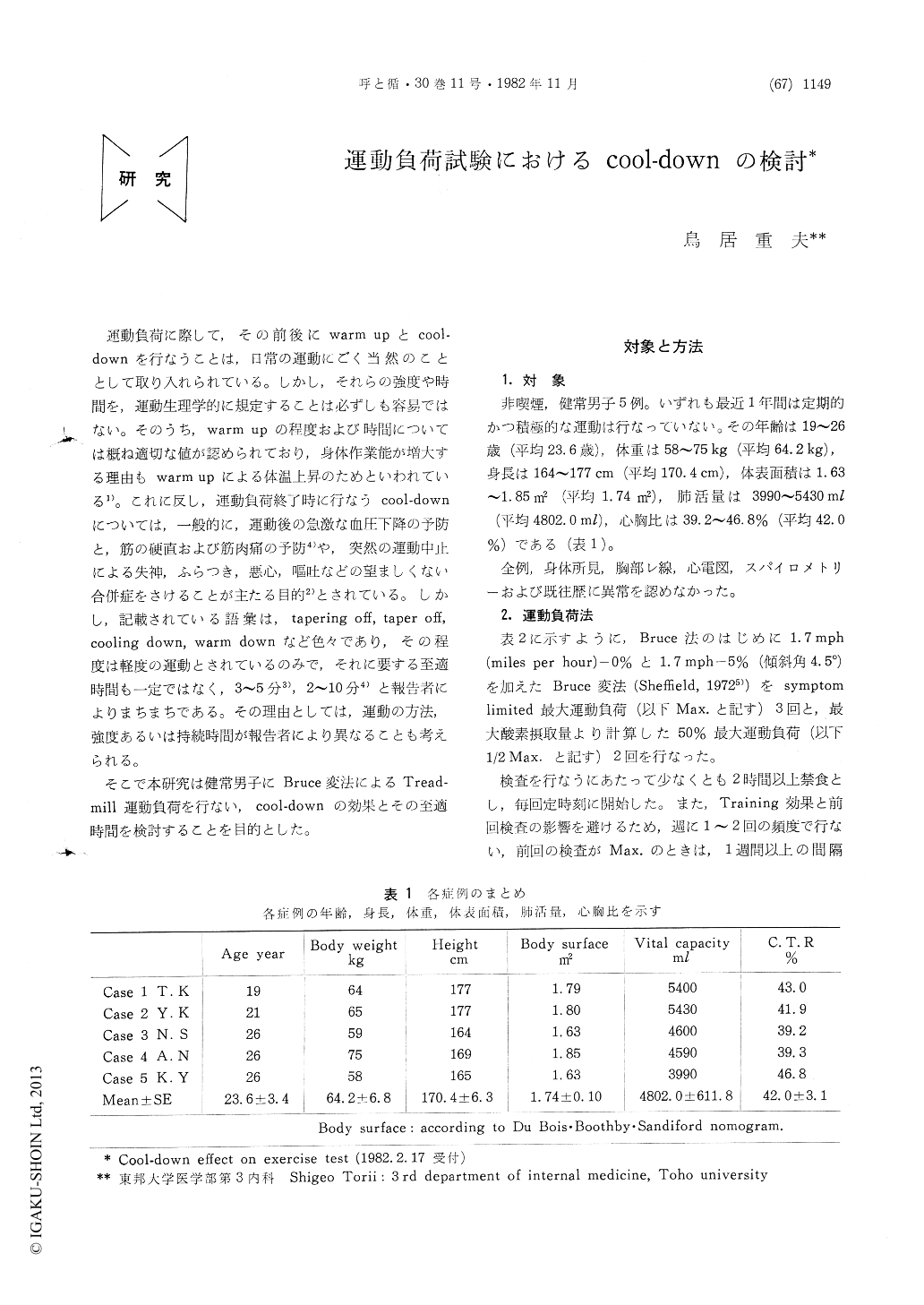Japanese
English
- 有料閲覧
- Abstract 文献概要
- 1ページ目 Look Inside
運動負荷に際して,その前後にwarm upとcool—downを行なうことは,日常の運動にごく当然のこととして取り入れられている。しかし,それらの強度や時間を,運動生理学的に規定することは必ずしも容易ではない。そのうち,warm upの程度および時間については概ね適切な値が認められており,身体作業能が増大する理由もwarrn upによる体温上昇のためといわれている1)。これに反し,運動負荷終了時に行なうcool-downについては,一般的に,運動後の急激な血圧下降の予防と,筋の硬直および筋肉痛の予防4)や,突然の運動中止による失神,ふらつき,悪心,嘔吐などの望ましくない合併症をさけることが主たる目的2)とされている。しかし,記載されている語彙は,tapering off,taper off,cooling down,warm downなど色々であり,その程度は軽度の運動とされているのみで,それに要する至適時間も一定ではなく,3〜5分3),2〜10分4)と報告者によりまちまちである。その理由としては,運動の方法,強度あるいは持続時間が報告者により異なることも考えられる。
Cool-down effect and its optimal time during the recovery of the exercise test were studied through two kinds of treadmill exercise tests. One was a maximal exercise test and the other was a half maximal exercise test, which was calculated from maximal oxygen consumption.
Five male subjects were engaged in exercise on a treadmill according to modified Bruce pro-tocol.

Copyright © 1982, Igaku-Shoin Ltd. All rights reserved.


